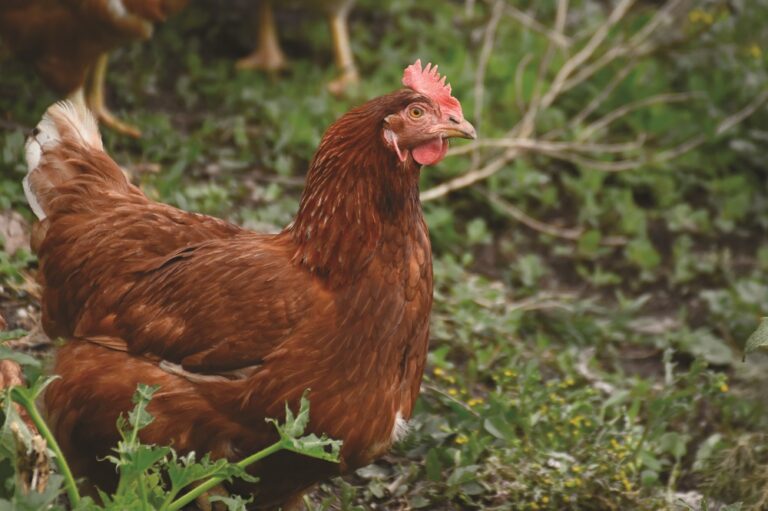Ambient summer temperatures are rising in the UK and this can have a significant impact on poultry in layer, broiler and breeder units.
Birds suffering from the effects of hot weather, typically temperatures between 25⁰C and 28⁰C, depending on the age, may reduce their feed intake by between 20% and 50%. Broiler growth can appear to ‘stall’, with growth rates reduced by as much as 65%. A drop in feed intakes will push egg production in layers into decline.
“Producers will also see red mite populations escalate in warm weather,” says Cargill UK poultry specialist Daniel Palcu.
He encourages producers to counter the effects of higher summer temperatures.
“The good news is that producers can use nutritional aids and feeding regimes to prevent a ‘check’ on productivity which can be caused by heat stress,” says Palcu. “These need to be in combination with management techniques, such as ventilation and reducing stocking density.
There have been significant advancements in nutritional solutions to improve productivity and efficiency in poultry flocks, which also support the drive to reduce antibiotic use.
Good hydration
Complementary liquid feedstuffs that offers a ‘cooling’ effect, which contain a synergistic combination of ingredients including betaine, vitamin C and potassium (such as AviCool), help to reduce the effects of high ambient temperatures on performance in broiler, layers and game birds.
These products are typically added to water, as and when ambient temperatures rise above 25⁰C, to promote water intake and help the bird hydrated under heat-stress conditions.
“The key is to encourage water intake and keep the birds well hydrated,” explains Palcu. “it’s also important to try and combat reduced feed intakes, which is why these supplements also contain an energy source, as well as salts and electrolytes.
“These liquid feed supplements encourage water consumption and support hydration. This will help to aid digestive function and also encourage birds to consume feed. And this, in turn, will contribute to ensuring that productivity – be that egg production or growth – is maintained.”
Palcu cites trials where birds offered water treated with AviCool drank twice as much as birds in the control group, which was offered untreated water.
In one trial, comparing an AviCool supplemented group with a control group, birds were heat stressed at 35°C from day 28 to day 30. Adding the liquid feed supplement saw a 29% improvement in growth rate. Feed intake was up 14%, feed conversion was 0.22 points higher, and mortality was 4.2% lower, compared to the control group where non-supplemented water was supplied.
“There’s certainly a return on investment, which is generated from higher daily liveweight gains in broilers, higher egg production in layers, and reduced mortality rates across all systems and poultry enterprises,” says Palcu.
He adds that liquid feed supplements to help combat heat stress are widely used across Europe. “And we know that once producers have used them, and discover how effective they are at helping to keep birds cool and reducing the impact of heat stress on performance, that they continue to use them whenever temperatures rise above 25°C.”
Palcu says that UK producers should look to add a liquid feed supplement to the water to combat heat stress at a rate of 1,000mg per 1,000 litres of water, as soon as temperatures reach or exceed 25⁰C. “If temperatures rise above 30°C, as they did frequently in 2018 and 2019, then the dose rate should increase to 1,500mg per 1,000 litres.”
Red mite
Another serious issue that rears its head as temperatures rise, particularly in laying and breeder flocks, is red mite. Populations explode in hot weather – creating a welfare issue as well as, again, having an impact on productivity.
The tipping point is at ambient temperatures of 25⁰C and, again, nutritional products are available that can be added to either feed or water to help protect bird performance and welfare. This approach to using a feed product to improve the environmental conditions is relatively new. Its flexible feeding options mean it can be added during feed formulation or on farm in the drinking system.
Cargill has recently developed a feed product, D-Mite, from natural components. “Added to either the water or feed, it has been shown to be highly effective within a few weeks,” says Palcu.
He says that producers who’ve used D-Mite, which is set to be launched in the UK in spring 2020 in both liquid and powder form, are sold on it – such is its efficacy.
Results from 14 trials, involving 500,000 birds, are consistent and compelling –across all poultry systems, including aviary, free range, and organic – with positive results
“Producers should be ‘at-the-ready’ to add feed products, to drinking water or feed, to help keep birds cool and support them in dealing with the pressure of red mites. This should be done ahead of birds being challenged by high temperatures, and before dehydration and red mite population explosions pose a significant risk,” stresses Palcu.
“It’s a case of watching the weather forecasts and keeping ahead of the game.”

Chloe Ryan
Editor of Poultry Business, Chloe has spent the past decade writing about the food industry from farming, through manufacturing, retail and foodservice. When not working, dog walking and reading biographies are her favourite hobbies.

